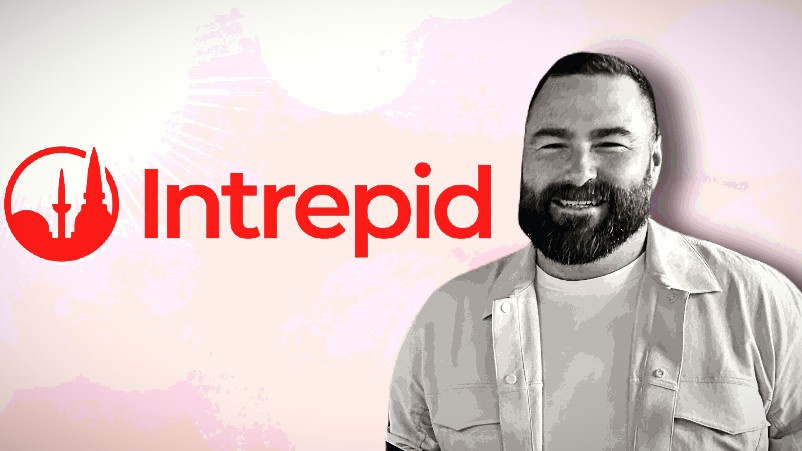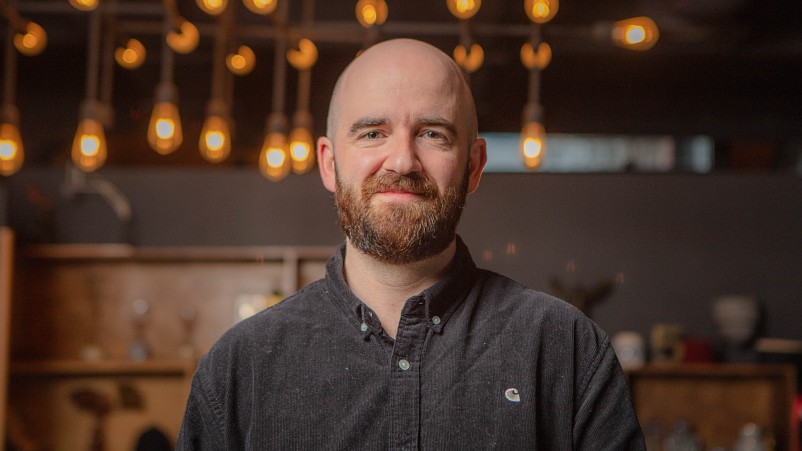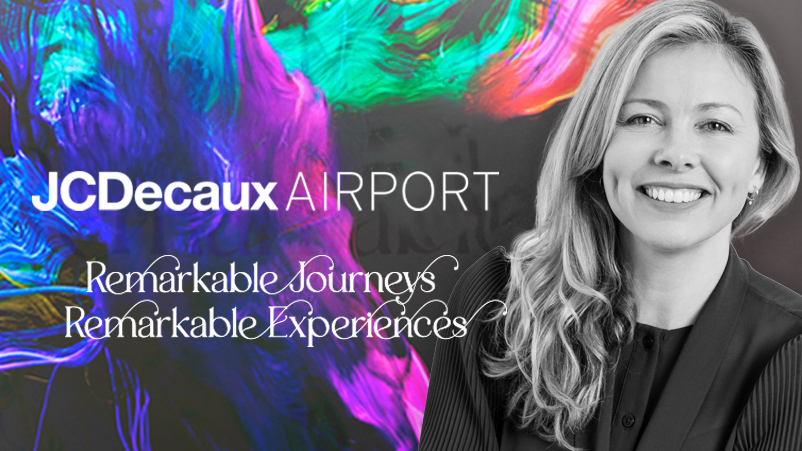Proof is in the pudding: Intrepid’s global brand bet delivers much-desired brand awareness lifts; while improved digital interactions and personalisation help drive 40% revenue growth

It’s been a big flip from performance-led marketing to global brand play, but 12 months on, the results are showing it’s paying off for Intrepid. Lifts in brand awareness, brand search and engagement across markets are on the scorecard, and there’s record revenue of $621m – the majority of which comes through owned channels – on the balance sheet. Not bad for a ‘phantom brand’ and tour operator that has been helping deliver experiences for 35 years but hasn’t always had the logoed T-shirt, branded bus or social feed recognition to prove it. While climbing that brand mountain, Intrepid chief customer officer, Leigh Barnes, has been working on his bigger, multi-year plan to firstly get to know customers better, then drive more ways for them to interact, engage and book. It’s a strategy fuelling digital and personalisation investment, as well as diversification outside tour products into accommodation – and the latest foray, book publishing.
What you need to know:
- It’s been a year since Intrepid debuted its first global brand campaign, ‘Good Trips Only’, and the numbers proving its impact are stacking up, including on the balance sheet.
- Key marketing indicators include 10-40 per cent lifts in branded search, depending on the city its global campaign appeared in, including a 30 per cent spike in London. Aided brand awareness lifted 5 per cent in Australia, as well as in other cities, contributing to a yearly overall average increase of 40 per cent.
- In addition, Intrepid has been building out its martech, digital and personalisation capabilities as it works to build out better interaction, engagement and bookings with customers. Chief customer officer, Leigh Barnes, says knowing customers better, combined with these capabilities and showing up as a brand more visibility, are all part of ensuring Intrepid keeps up customers.
- All this has led to record booking revenues of $621m in 2023, and 20 per cent year-on-year increases so far this year, getting Intrepid closer to its $1bn revenue target.
- In recognition of its most loyalty customers only travelling every two years, Intrepid has recognised the value in diversifying its product lines and cross-selling, and has not only added new trips, but invested in accommodation and now book publishing as other ways of engaging with customers more frequently.
A year ago, Intrepid took the wrappers off its first ever global campaign, ‘Good Trips Only’, a massive bet on brand that proved a pivotal turning point in the thinking of its chief customer officer and former performance marketing aficionado, Leigh Barnes.
Twelve months later, Intrepid is celebrating its best year ever, recording full-year 2023 revenue of $621 million, up 40 per cent year-on-year and 0.3 per cent above target. It has since had its biggest January and is targeting $742m bookings target this year. Right now, it’s tracking 20 per cent up year-on-year on revenue and getting ever-closer to the goal of being a $1 billion purpose-led business.
Revenge travel has no doubt helped here, but Barnes knows concerted efforts to build brand have a much to do with the results too. For one, branded search for ‘Intrepid Travel’ increased between 10 and 40 per cent depending on the city its global campaign appeared in, including a 30 per cent spike in London. Aided brand awareness lifted 5 per cent in Australia, as well as in other cities, contributing to a yearly overall average increase of 40 per cent.
Intrepid’s first coordinated global campaign, followed up by a second iteration last August-October, comprised TV, cinema, radio, podcasts, out-of-home (OOH), print and digital advertisements in major economic and media hubs, reaching 280 million people. Increased searches for ‘Intrepid’ are up by 55 per cent, averaging 434,000 impressions per month.
“Doing creative brand work and spending on brand in above-the-line, print and through digital means, has been a big shift,” Barnes told Mi3. “There is ROI on all this, but there’s also nothing bad about more people knowing who you are. With digital, not everyone is online all of the time. And they’re not remembering what they do see on the Internet all the time either. It’s the same with print ads as well or above the line – but there is something about showing up in the real world.
“I speak to customers every week and the thing I’ve learnt is it’s part of their purchase pathway, but it’s not the be all, end all. They check reviews, go on social media and may interact with you there, but it’s messy. We were not showing up in enough places to make it easier for customers to choose us. We were only showing up at the pointy end once they crunched the keyboard.”
Couple this reorientation of spend with branded messaging out there early saying travel is back for good - before many other travel companies, Barnes claims – then owning ‘good trips’ creatively, is something be believes inspires more consumer confidence in the Intrepid business.
“There’s a certain amount of trust that comes with showing up in someone’s favourite newspaper, or appearing on that billboard in the main square, or being on the bus in London. You are a real company and you do have cash behind you to be able to do these things,” he said.
But even beyond direct engagement and sales, Barnes cites “unintended happy consequences” of investing in brand. For example, tourism boards to B2B partners and journalists have been reaching out to the tour operator to join forces on brand work. The other surprise Barnes sees “makes sense but you just don’t think about at the time, is the pride your people have in the work and brand”.
“We are on top of Young & Jacksons as a billboard and all our staff got their photo out the front of the pub under it. That pride is real,” said Barnes. “That’s not something you’ll see in the analytics. But it’s had a big impact. We have tourism boards working with us as they have seen our creative work, and with our people more engaged and taking photos with the branded tram. These are the happy accidents along the way.”
It’s a big step forward for a company previously over indexing on performance marketing. Today, it’s about 50 per cent of external spend.
And it’s a far cry from a few years ago, when nary an Intrepid branded t-shirt was in sight. “We were a ‘phantom’ brand – because it was an experience, we didn’t show up anywhere. It’s not like a pair of shoes, where someone buys a new pair of New Balance then wears them to the pub,” per Barnes.
“People go on trips, they talk about the amazing experience of seeing Machu Picchu or spending a night in the Sahara, but they may not have spoken about Intrepid. From that insight, we knew we needed to be more visible as a brand, show up and try to build that mental availability. We didn’t have that because it wasn’t baked in like it is with a T-shirt or cereal bars.”
These days, the bus Intrepid customers get picked up in is branded – as is staff apparel. “So one thing for us has been showing up more with our product; two, it’s been putting bold creative our there; and three, it’s been changing our media buying habits,” says Barnes.
There’s a certain amount of trust that comes with showing up in someone’s favourite newspaper, or appearing on that billboard in the main square, or being on the bus in London. You are a real company and you do have cash behind you to be able to do these things
More interaction, more engagement, more bookings
Making Intrepid easier to see via brand building feeds into Barnes’ North Star: Making it easier for customers to book, engage and interact with Intrepid. To do that, the tour operator needed to know customers better. That’s been a dominant bullet point on Barnes’ priority list for the past three years. As part of his remit, he’s rolled out Salesforce, Intrepid’s first CRM platform, and helped orchestrate a sales and marketing transformation to use it. To date, Intrepid has 30 new email behavioural journeys leveraging data and automation to provide a more personalised experience.
In concert, the team tackled its website, striving for improvements to its booking engine, and installing a dedicated CX team. Digital revenue has grown 40 per cent year-on-year, representing 10,000 more direct customers. In 2024, 65 per cent of bookings are made via the website, versus 35 per cent five years ago.
“We drastically changed our mix of where we are getting our customers, which has really helped us to have more direct relationships. We’re able to get direct feedback and insights from them, communicating one-on-one,” said Barnes. “We continue to see that growth coming out of the pandemic with more customers booking directly online. And we accentuated growth into the Northern Hemisphere with the US and UK coming online over the last couple of years.”
Other figures Barnes points to are record-high booking Net Promoter Scores (NPS) of 69, up 9 points from 2022.
Diversifying beyond the tour
With the groundwork laid, Barnes is looking to the future and what’s next for customers. “I’m running at two speeds – the nuggets of gold in the small things customers don’t like and fixing those, while trying to push the boat out and find more ways customers might engage with us in the future,” he said.
“We started by providing these offerings owned by us – our website, CRM, talking about our brand for example. Now, it’s talking about what are the things our customers want. It’s trying to find ways to interact with the brand more often, and give them something more tangible beyond our tours, which has been core to our business for the last 35 years.”
It’s a strategy driven by the insight that even Intrepid’s most loyal customers only take tours every two years.
One string to the diversification bow is broadening tour offerings and introducing more domestic products, such as Cradle Mountain and Daintree trips. In addition, Intrepid expanded US and New Zealand offerings.
Another strategy is investing in accommodation, something Barnes said has really come to life in the last six months and was initially scoped out by former Intrepid MD and now Tourism Tasmania CEO, Sarah Clark. Purchases include a Daintree ecolodge, plus a 50 per cent share in off grid accommodation offering, CABN. Then there’s expanding Intrepid foundations, opportunities for customers to engage with projects and causes they care about. Last year, intrepid raised $2.8m, 40 per cent above target.
As of February, Intrepid is also stepping into the world of book publishing, striking a deal with publishing group, Hardie Grant.
“We fundamentally believe travel changes the way people see the world and storytelling is such an important part of the trip – there’s a natural connection there,” Barnes said. “We want people to have experiences, be curious and learn. A lot of those attributes happening on a trip also happen in a book. People learn, engage, are curious and grow as they read. That was the nugget or genesis of the idea.”
The series of books will focus on experiences and storytelling, as opposed to the shopping list of travel experiences found within the pages of a Lonely Planet guide. The first book is a collection of 100 stories and experiences from customers, staff and writers, is due out in October, and positioned towards ‘intrepid’ travellers – explorers, thrill-seekers, foodies and festival-goers.
“It’s about an experience that should spark curiosity, learn something new and hopefully at some point have the experience yourself,” said Barnes. “Even loyal customers are only a doing tours every year or two, they’re still craving and interested in trend, and we still see them engaging with our content.
“So the two things for us were how frequently loyal customers travel with us; and secondly, recognising that thirst for knowledge. We thought a book was tangible and real. So many of our Intrepid experiences are about the experiences. We thought it’d be cool to have some Intrepid things like a book, someone can hold, thumb through, notate, and have on their coffee table.”
Intrepid has its sights on revenue from outside tours reaching 20-30 per cent of total business by 2030.
“Hotels will play a much larger role in our business and we’re going to see a large volume of revenue coming in from around the world. Books are a niche within that, but we’d like it to be a possible business over coming years getting Intrepid more into people’s hands,” Barnes said. “The other thing is what we hope is Intrepid customers who buy a book or stay in one of our ecolodges go to our tour range as well. We do plan to be able to cross-market, give these other products to these customers as well.”
A changing travelling demographic and destination
Alongside product diversification is realisation the target cohort for Intrepid tours itself is shape shifting. Coming out of the pandemic, it’s apparent travellers are an ageing consumer demographic.
“The trend we are all seeing in the travel sector is more baby boomers are travelling more than before. That’s been one of the big shifts and seasonal changes – I don’t think people under 35 are back travelling internationally in the volumes they were pre-Covid,” per Barnes. “We are still growing in other cohorts, but nothing like we are in that baby boomer segment. We think that trend is going to continue for the next couple of years.”
Another shift Intrepid is contending with is where people are travelling to and perceptions of value. People might have four-week holidays even in downtimes, but they’re travelling differently.
“They still do something but what they do may change depending on their situation,” Barnes added. “There is a lot more travel to Southeast Asia, where the dollar goes further and there are more discount airlines getting you into these places.
“There’s also a softening in Europe; last year was ridiculous. That’s slowing because the cost to go is high, people don’t have those two years of savings, so there is devil in the detail. We’re still growing in those younger cohorts, but overall the shift in where people are going shows a quest to find more value. I don’t think we will see this volume of travel at this scale ever again that we’re seeing now with Baby Boomers.”
Whatever the lucrative traveller guise, Barnes knows interactions and engagements with them need to be unified.
“One continuing priority is our website, and getting our back-of-house and tech better to just makes things easier for customers. My other big pillars are continuing to get our data in order – we could do a lot more around not just increasing customer interactions around new products, but getting people to travel more often with us,” he said
“And there’s lots of work to getting our customers to share more of their stories with intrepid on social media; that’s a big next step for us.”



